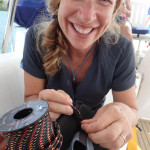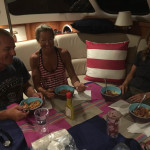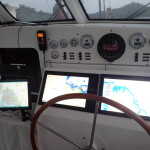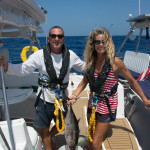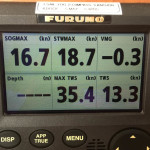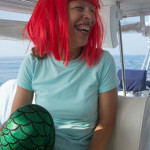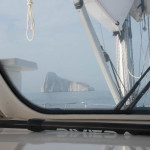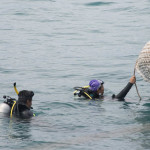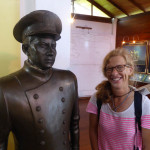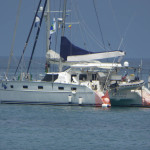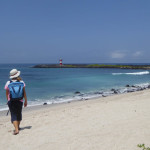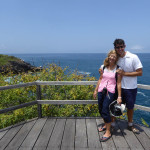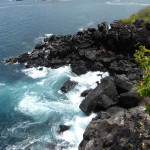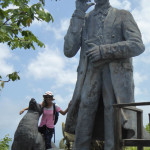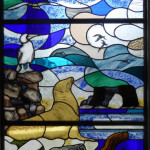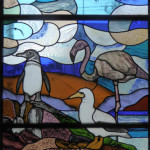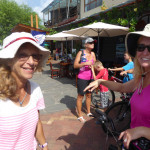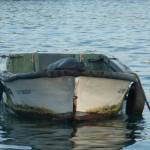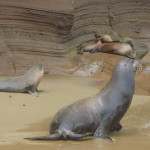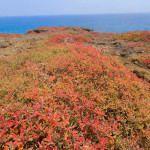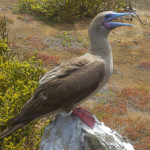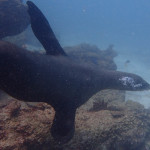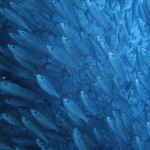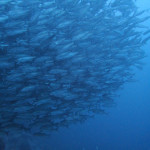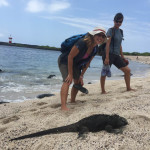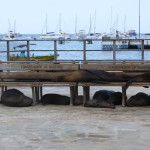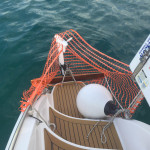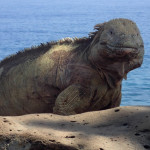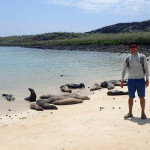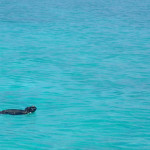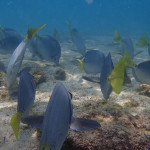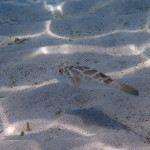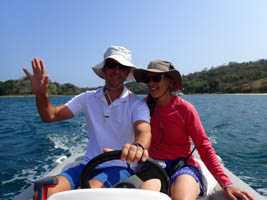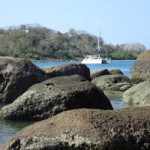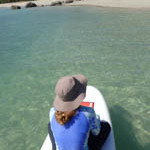I have been reading a couple of books on Captain Cook. Short version: he explored the South Pacific, Australia, New Zealand and the South Pole and was eaten by cannibals in Hawaii. As we are sailing in his wake I thought it would be enjoyable to read his adventures, but now I am convinced he is cursing us from the grave (actually from the belly of the Hawaiian who ate him).
The evidence of this curse is that every time I read a chapter where something afflicts Cook’s ship something similar occurs on Two Fish. I have wisely suspended reading anymore pages until we are safely in Australia.
#1
Shortly after reading about a series of painful illness striking the Endeavor, I was set back with a flu. I am sure this came from the pages of the book.
#2
We had the amazing crew of Mike and Rebecca from Zero To Cruising aboard. They made the canal passage easy and we are thankful they came aboard. However, the curse of Cook did not escape them. In the book Cook has an issue with his anchor. Later, on Two Fish I noticed our stern anchor did not seem too effective. I pulled on the line and it came to the boat with little effort. At the end of the line was only half of a shackle. Mike had forgotten to tighten the shackle properly and my stern anchor had escaped. A well studied sailor had been done in by the curse of Cook. After one and a half hours of diving, the search was given up as the visibility was poor. Two Fish is fine as we still have two anchors and Into the Blue, another rally boat, was quick to offer their spare anchor. What a nice bunch of folks. Cook did not have friends like us!
#3
Cook hit the barrier reef and two days after reading of his crash, Two Fish bumped bottom. We dropped anchor in 5 meters of water. The tide went out a bit more than the tables predicted and the depth sounder was reading 3.2 meters. Gail took the handheld sensor and measured the depth from the stern because the built in sensor is near the bow. Our stern depth was 1.9 but we only need 1.2 meters. A wave came and stole some of our water. We touched bottom. Gail was great and was working the anchor chain in a flash. We moved forward 5 meters and had plenty of water. We learned to afford some room for waves in our depth calculations. We were smart to stay onboard during the tide change as it would have been much worse had we been ashore.
#4
Captain Cook complains that his crew was too slow with the lead line used for sounding the depth. Instead of a depth sounder issue, Two Fish’s anemometer (wind meter) is starting to fail. The Cook curse was noticed at anchor yesterday. The computer was displaying zero knots of wind during a zephyr of over 5 knots. I shook the mast and the anemometer cups began to spin and the computer showed 5 knots. The problem was not electrical but mechanical at the top of the mast. Gail “volunteered” to go to the top of the mast and investigate. Despite two trips to the top she was unable to change the performance of the misbehaving machine. It seems the bearing has seized up and the unit is not serviceable. A call to Furuno support confirmed our fears but we were told there is a near by service center in Singapore (9,000 miles away). We do carry a spare hand held wind meter and our next crew (Jim and Theresa) will come with a replacement for the broken part (thanks guys!). Any volunteers for installing the devil?
#5
Cook had many issues when meeting the natives of the South Pacific Islands. Spears being tossed at his crew, insults yelled in unknown languages and natives with scary face paint barking guttural noises were some of Cook’s negative negative encounters. Two Fish was attacked by paperwork. At one point we had 12 representatives from the Galapagos aboard Two Fish. They were all polite and only asked for water.
